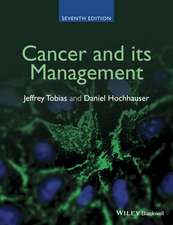Progress in Cell Cycle Research: Volume 4: Progress in Cell Cycle Research
Editat de Laurent Meijer, Armelle Jézéquel, Bernard Ducommunen Limba Engleză Paperback – noi 2012
Preț: 389.88 lei
Nou
Puncte Express: 585
Preț estimativ în valută:
74.63€ • 78.40$ • 62.72£
74.63€ • 78.40$ • 62.72£
Carte tipărită la comandă
Livrare economică 12-26 martie
Preluare comenzi: 021 569.72.76
Specificații
ISBN-13: 9781461369097
ISBN-10: 1461369096
Pagini: 260
Ilustrații: VIII, 248 p.
Dimensiuni: 178 x 254 x 14 mm
Greutate: 0.46 kg
Ediția:Softcover reprint of the original 1st ed. 2000
Editura: Springer Us
Colecția Springer
Seria Progress in Cell Cycle Research
Locul publicării:New York, NY, United States
ISBN-10: 1461369096
Pagini: 260
Ilustrații: VIII, 248 p.
Dimensiuni: 178 x 254 x 14 mm
Greutate: 0.46 kg
Ediția:Softcover reprint of the original 1st ed. 2000
Editura: Springer Us
Colecția Springer
Seria Progress in Cell Cycle Research
Locul publicării:New York, NY, United States
Public țintă
ResearchCuprins
Relationship between RAS pathways and cell cycle control.- Cell-anchorage, cell cytoskeleton, and Rho-GTPase family in regulation of cell cycle progression.- The Continuum model and G1-control of the mammalian cell cycle.- Histone acetylation and the control of the cell cycle.- 14-3-3 proteins and growth control.- A Cdc7p-Dbf4 protein kinase activity is conserved from yeast to humans.- Alternative product of the p16/CKDN2A locus connects the Rb and p53 tumor suppressors.- Phosphorylation-dependent prolyl isomerization: a novel cell cycle regulatory mechanism.- Functions of Pho85 cyclin-dependent kinases in budding yeast.- Cell cycle regulation by the Cdc25 phosphatase family.- Molecular mechanisms of the initiation of oocyte maturation: general and species-specific aspects.- The activation of MAP kinase and p34cdc2/cyclin B during the meiotic maturation of Xenopus oocytes.- Premature chromatin condensation caused by loss of RCC1.- HTLV-I tax and cell cycle progression.- The cell cycle in protozoan parasites.- Circadian control of cell division in unicellular organisms.- Circadian variation of cell proliferation and cell cycle protein expression in man: clinical implications.- Molecular switches that govern the balance between proliferation and apoptosis.- Molecular events that regulate cell proliferation: an approach for the development of new anticancer drugs.- Abortive oncogeny and cell cycle-mediated events in Alzheimer disease.- Contributors.
Recenzii
`The editors have produced a stimulating volume thanks to the excellent contributions of the authors, with all of them having delivered their manuscripts on time such that the publishing delay has been only about a year. A good read for both those workers engaged in cell cycles studies and students who are `just interested'.'
Cell Biochemistry and Function, 19:1 (2001)
Cell Biochemistry and Function, 19:1 (2001)














